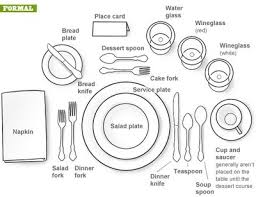Mastering Proper Spoon and Fork Placement: A Guide to Table Etiquette
Understanding the correct placement of spoons and forks on the dining table is essential for creating an elegant and organized dining experience. Proper placement not only enhances the aesthetics of the table setting but also ensures practicality and ease of use for diners. Let's explore the key principles and guidelines for mastering spoon and fork placement:
1. Spoon Placement: Positioning for Precision
The placement of spoons on the dining table is dictated by the order of the meal courses. Soup spoons, for example, are typically placed to the right of the dinner plate, with the bowl facing outward. Dessert spoons may be positioned horizontally above the dinner plate or alongside the dessert dish, ready for use after the main course.
2. Fork Placement: Aligning for Accessibility
Forks are arranged to the left of the dinner plate, with the tines facing upward. The number and types of forks may vary depending on the number of courses served. For formal dining, forks are arranged in order of use, with the salad fork placed to the outer left and subsequent forks moving inward toward the plate.

spoon and fork placement
3. Knife Placement: Completing the Trio
While not directly related to spoon and fork placement, the positioning of knives completes the trio of essential utensils on the dining table. Knives are typically placed to the right of the dinner plate, with the blade facing inward. Like forks, knives may be arranged in order of use, with the butter knife positioned closest to the plate and other knives arranged accordingly.
4. Consideration for Space and Symmetry
When arranging spoon and fork placement, it's essential to consider the overall symmetry and balance of the table setting. Utensils should be spaced evenly and aligned with one another to create a visually pleasing arrangement. Additionally, utensils should be positioned at a comfortable distance from each other to allow diners to easily reach for them during the meal.

spoon and fork placement
5. Adhering to Cultural and Formality Norms
Table etiquette may vary depending on cultural customs and the formality of the occasion. In some cultures, for example, the placement of utensils may differ slightly from traditional Western etiquette. Similarly, formal dining events may require stricter adherence to etiquette guidelines, including precise placement of spoons and forks according to protocol.
6. Conclusion: Elevating the Dining Experience with Proper Placement
In conclusion, mastering the proper placement of spoons and forks is an essential aspect of table etiquette that enhances the dining experience for both hosts and guests. By following guidelines for spoon and fork placement, diners can create an atmosphere of elegance and refinement while ensuring practicality and ease of use. Whether hosting a formal dinner party or enjoying a casual meal at home, attention to detail in utensil placement adds a touch of sophistication to any dining occasion.